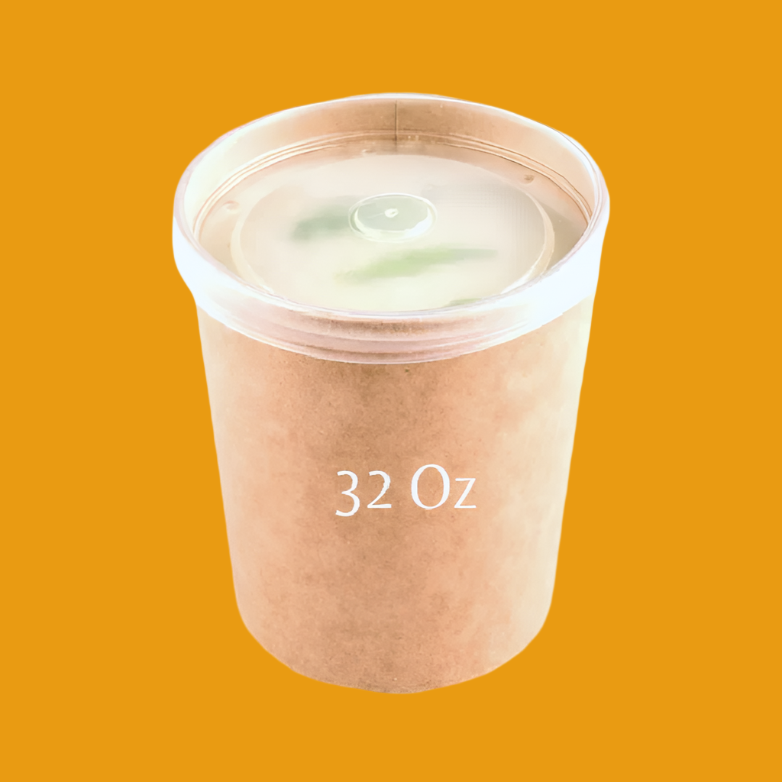The food and beverage industry is constantly evolving, with new trends emerging each year to meet changing consumer preferences, innovations in sustainability, and advancements in technology. From plant-based diets and sustainable packaging to the rise of immersive dining experiences, the trends shaping the industry reflect a growing desire for healthier, more ethical, and unique food experiences.
As businesses adapt to these shifting demands, staying ahead of food and beverage trends has become essential for success. In this article, we’ll dive into some of the key trends currently influencing the industry and how they are shaping the future of food and drink.
-
Important trends in the food and beverage packaging market for 2024
-
Top 5 Food Packaging Trends 2025 for Businesses to Stay Update
-
Food and Packaging Trends: How Can Food Banks Adapt for Greater Impact?
Embracing Simplicity: Back-to-Basics and Clean Ingredients

Back to Basics
In recent years, there has been a notable shift towards traditional cooking methods and simple, wholesome meals. This trend is primarily driven by consumers seeking authenticity in their food choices and a growing emphasis on health. Home cooks have begun revisiting age-old recipes and techniques, finding reassurance in their simplicity and nourishment.
For example, many people are rediscovering the joy of slow cooking, baking bread from scratch, or fermenting their vegetables at home. These practices not only connect individuals with their food but also foster a sense of community, as families gather around the dining table to enjoy homemade meals. The growing popularity of cookbooks that focus on minimalistic ingredients and straightforward preparations reflects this resurgence as people value time spent in the kitchen rather than opting for convenience or processed meals.
Clean Ingredients
Consumers are increasingly aware of what goes into their food and are demanding natural, minimally processed options. This shift towards clean ingredients is evident in the rise of products boasting labels that are free from artificial additives, preservatives, and synthetic ingredients. Brands are responding to this demand by being transparent about their sourcing and ingredient lists.
Consider the impact of recent campaigns advocating for cleaner labels; many companies have introduced "clean" product lines that focus on wholesome, recognizable ingredients. This trend resonates particularly well with health-conscious individuals and parents who strive to provide nourishing meals for their families without the baggage of unnecessary chemicals.
Global Flavors and Culinary Exploration

Global Tastes
The quest for novel culinary experiences has sparked a significant interest in diverse cuisines, especially from regions like India and Asia. As consumers become more adventurous, they have begun exploring flavors that were once unfamiliar to them. This exploration of global tastes is reflected in the increasing number of restaurants offering authentic international dishes and the popularity of meal kits featuring globally inspired recipes.
For instance, the demand for Indian spices like turmeric and cardamom has surged, as more people seek to recreate their favorite restaurant dishes at home. Additionally, Asian street food has gained traction, with dishes like ramen and bao buns becoming household favorites. This trend emphasizes a keen interest in elevating the dining experience by embracing new flavors and cultural practices surrounding food.
Health and Wellness: Functional Foods and Beverages

Functional Beverages
The rise of functional beverages has become a defining characteristic of modern food and drink trends. Consumers are now more inclined to seek drinks infused with health benefits, such as collagen, adaptogens, and other wellness-enhancing ingredients.
Brands have responded by introducing options like herbal teas, sparkling waters with added vitamins, and smoothies enriched with various health-boosting components. This transformation in beverage consumption mirrors an overall shift towards wellness, as consumers increasingly recognize the importance of holistic health in their daily choices.
Gut Health
Another significant focus within the health and wellness realm is digestive wellness, with an emphasis on probiotics and fermented products. Foods like yogurt, kimchi, and kombucha have gained prominence due to their role in supporting gut health, which is increasingly recognized as vital not only for digestion but for overall well-being.
This awareness has driven a remarkable surge in interest around these functional foods. More people are adding fermented items to their diets or seeking out probiotic-rich options. Awareness campaigns and educational efforts by health professionals have also contributed, making it clear that what we eat profoundly impacts our digestive system and, by extension, our overall health.
Sustainability and Ethical Consumption

Sustainable Packaging
As environmental concerns take a front seat, the food industry has witnessed a notable shift towards sustainable packaging solutions. Consumers are gravitating away from single-use plastics and opting for waste-free or compostable packaging in their grocery purchases and takeout options.
This change has prompted many businesses to rethink their packaging strategies. Brands are now adopting more responsible materials and practices, such as using biodegradable wraps or reusable containers capable of minimizing environmental impact. This trend highlights an increasing awareness and responsibility among consumers and companies alike in addressing ecological issues.
Local Sourcing
Consumers are also demonstrating a clear preference for locally sourced ingredients. By supporting local farmers and producers, diners not only contribute to their regional economies but also reduce the carbon footprint associated with transporting goods over long distances.
Farm-to-table dining has gained widespread popularity as restaurants emphasize their commitment to local sourcing. Customers often feel a stronger connection to the food they consume when they know where it comes from and how it was produced. This trend reaffirms the community's desire to engage with local traditions and the pride associated with regional cuisine.
Technological Innovations in Dining
AI and Automation
The integration of artificial intelligence (AI) and automation in dining has transformed how food is prepared and consumed. From smart kitchen appliances that allow for precise cooking to AI-based systems that recommend personalized dining experiences, technology is reshaping the culinary landscape.
For example, many restaurants now utilize AI software to analyze customer preferences and enhance menu offerings. This level of personalization not only improves customer satisfaction but also optimizes food inventory, helping reduce waste.
Ghost Kitchens
Ghost kitchens have emerged as a response to the increasing demand for convenient dining options. These delivery-only kitchen models allow chefs to focus solely on preparing food without the overhead of a traditional dine-in experience.
As online food delivery services continue to flourish, ghost kitchens offer restaurants a way to reach customers without the constraints of physical storefronts. This concept is appealing for both established brands and new culinary ventures, enabling them to experiment with menu offerings and expand their reach with reduced risk.
Beverage Trends: From Non-Alcoholic to Nostalgic
Non-Alcoholic Beverages
In recent years, the beverage industry has witnessed a remarkable shift towards non-alcoholic options. This trend is primarily driven by a growing number of health-conscious consumers who seek alternatives that allow them to enjoy social experiences without the effects of alcohol. According to market research, the global non-alcoholic beverage market is projected to grow significantly, indicating a strong consumer preference for alcohol-free drinks.
Innovations in this space have been abundant. From craft non-alcoholic beers to sophisticated mocktails, many brands are stepping up to create flavorful beverages that do not compromise on taste or experience. Companies like Seedlip have paved the way by offering complex flavor profiles that mimic traditional spirits, while others have introduced functional drinks infused with vitamins and adaptogens aimed at enhancing wellness.
Nostalgic Flavors
Nostalgia plays a powerful role in today's food and beverage market. Consumers yearn for flavors that remind them of simpler, more enjoyable times. The revival of classic flavors, such as brown sugar, has become a popular trend within the beverage landscape. This flavor not only connects with consumers' memories but also evokes a sense of comfort and warmth.
Brands are capitalizing on this nostalgia by creatively incorporating these familiar tastes into contemporary formats. For example, many modern coffee shops are now offering brown sugar oat milk lattes, combining a beloved flavor with modern dietary preferences. The key takeaway is that brands that tap into these nostalgic flavors while presenting them in innovative ways can create a stronger emotional connection with their audiences.
Opportunities for Startups in the Evolving F&B Landscape

Product Innovation
The food and beverage landscape is ripe with opportunities for startups willing to venture into uncharted territories. Innovative product development is at the heart of this evolution. Startups have the flexibility to experiment and can quickly pivot based on consumer feedback or market shifts.
For instance, with the increased interest in health and wellness, brands that offer functional beverages—those with added health benefits—are gaining traction. Examples include beverages enriched with probiotics or plant-based proteins. Startups that identify niche markets and cater to specific consumer needs are likely to thrive in this competitive environment.
Sustainable Practices
Sustainability has emerged as a critical consideration for consumers today. As the effects of climate change become more evident, many individuals are making conscious choices about the brands they support. Startups can benefit from this trend by implementing eco-friendly practices across their operations.
Using locally sourced ingredients, minimizing packaging waste with sustainable materials, and employing environmentally friendly production methods can set a brand apart. Moreover, being transparent about sustainability efforts can enhance a brand's reputation among consumers. For example, brands that commit to zero waste or carbon neutrality resonate strongly with the eco-conscious consumer.
Leveraging Technology
Finally, technology plays a significant role in modernizing the food and beverage industry. Startups that embrace digital tools can greatly enhance their marketing efforts and streamline operations. From social media marketing to e-commerce platforms, there are numerous ways to reach consumers effectively.
Additionally, utilizing customer engagement tools like mobile apps or loyalty programs can enhance the customer experience. These platforms enable personalized interactions and give valuable insights into consumer preferences. As technology continues to evolve, startups that remain adaptable and tech-savvy will likely find themselves ahead of the curve.
Ultimately, as the food and beverage landscape continues to shift, there is significant potential for innovation, sustainability, and connection with consumers. For startups looking to make their mark, understanding these trends and adopting strategic practices may lead to success
Conclusion
In conclusion, food and beverage trends are a powerful force driving change in the industry, reflecting a growing awareness of health, sustainability, and innovation. By understanding and embracing these trends, businesses can not only cater to the evolving preferences of consumers but also lead the way in creating more responsible and exciting dining experiences. Whether you're an entrepreneur, a chef, or a consumer, staying attuned to these trends ensures that you are part of the ongoing transformation shaping the future of food and beverage.









